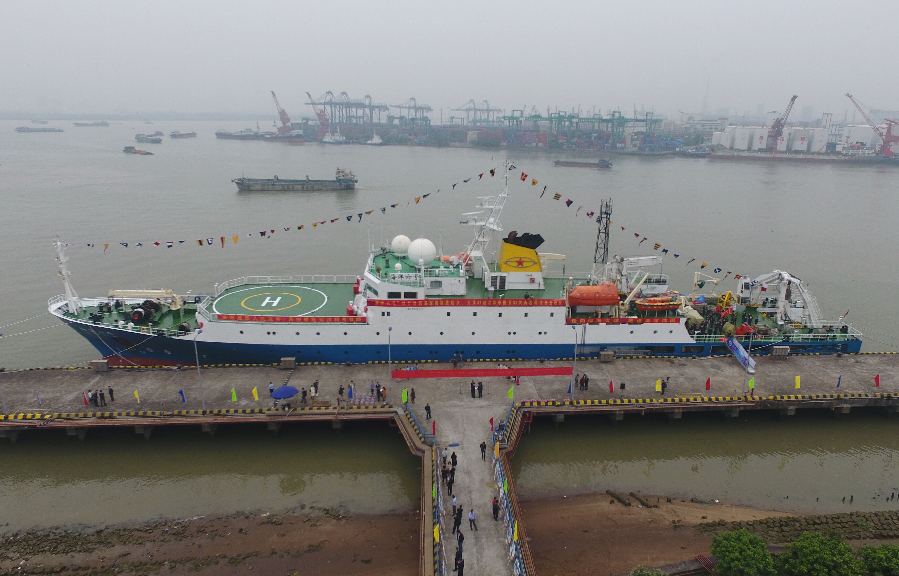(Source: CGTN)
China's Haiyang-6 scientific research vessel returned to China on Friday, after conducting geological exploration in waters around the world for a whopping 232 days. And the vessel came back with many achievements and scientific breakthroughs.

China's Haiyang-6 scientific research vessel returned to China on Friday, after conducting geological exploration in waters around the world for a whopping 232 days.
232 days of exploring. The state-of–the-art vessel berthed at a wharf specially used for marine geological studies in Dongguan City, south China's Guangdong Province.
Setting off last July. And travelling nearly 70,000 kilometers. The ship conducted research in polar regions, as well as their oceans and deep seas.
"Haiyang-6 traveled across the Pacific Ocean, the Atlantic Ocean, the Southern Ocean and the area surrounding the Antarctic Peninsula. A variety of comprehensive technologies including geological sampling, multichannel seismic exploration, and geothermal measurements were adopted during the journey," said He Gaowen, research vessel's chief scientist.
The longest voyage with the largest crew, covering the largest operation area. Haiyang-6 set many new records. It made substantial research gains on the cobalt-rich crust in the Pacific Ocean. It was also the first time that Haiyang-6 launched a geological survey in the South Pacific, where it discovered new rare-earth enriched sediments.
"It's truly a treasure, someone even called it black gold in deep ocean, as it has many many metallic and rare-earth elements, its metal content is even higher than that of the most minerals on land," He said.
More notably, it made its maiden appearance in the South Pole and met with Chinese icebreaker Xuelong.
Due to advanced geological survey equipment, Haiyang-6 managed to acquire highly precise three-dimensional topographies of the seabed covering some 20,000 square kilometers in the polar region, providing accurate water depth data for future scientific research and navigation throughout the area.















